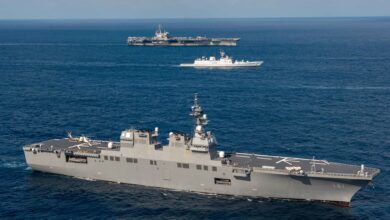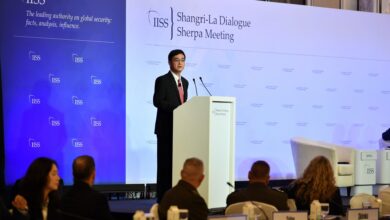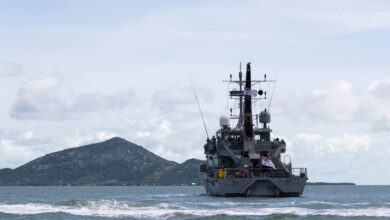Global Storm highlights interoperability of U.S. strategic deterrence

U.S. Strategic Command
United States Strategic Command (STRATCOM) forces, supported by assets including long-range bombers and a nuclear-powered submarine, honed their mission of deterrence during exercise Global Storm in the western Atlantic Ocean in mid-August 2021.
Developed by STRATCOM, the exercise near the Bahamas demonstrated the interoperability, lethality and second-strike capability of U.S. nuclear forces.
“Strategic deterrence enables every U.S. military operation around the world,” Adm. Charles Richard, STRATCOM commander, testified before the U.S. Senate Armed Services Committee in April 2021. “Every operational plan in the department, and every other capability we possess, rests on an assumption that strategic deterrence, and in particular nuclear deterrence, is holding.
“STRATCOM sets the most foundational of operating conditions to allow the rest of the joint force to accomplish its mission,” Richard said.
The U.S. nuclear triad includes long-range bombers, intercontinental ballistic missiles and submarine-launched ballistic missiles, with the three legs linked by nuclear command, control and communications (NC3) networking capabilities.
During Global Storm, two U.S. Air Force B-52H Stratofortress long-range bombers from the 2nd Bomb Wing and a U.S. Navy E-6B Mercury command and control aircraft from Strategic Communications Wing 1 conducted maneuvers with the USS West Virginia, a U.S. Navy nuclear-powered ballistic missile submarine. The exercise highlighted the interoperability of strategic capabilities. (Pictured: U.S. Air Force B-52H Stratofortress bombers fly above the USS West Virginia during exercise Global Storm in August 2021.)
Nuclear-powered submarines such as the USS West Virginia can remain underwater and undetected for months while deployed on missions. As a result, NC3 capabilities and air support are critical to their effectiveness.
Although the submarines can cruise for years before refueling, their crews require more frequent resupply by returning to port or rendezvousing at sea with a replenishment ship. These traditional resupply options can be observed and tracked, potentially exposing the submarines to hostile forces for an extended period.
During the second phase of Global Storm, two SH-60 Seahawk helicopters from the U.S. Navy’s Helicopter Maritime Strike Squadron 60 rendezvoused with the USS West Virginia in a demonstration of expeditionary logistics known as vertical replenishment.
Along with extending submarine patrol time, this nontraditional resupply method eliminates direct contact with submarine crew members, limiting the risk of the spread of disease during a health crisis.
IMAGE CREDIT: UNITED STATES NAVY




